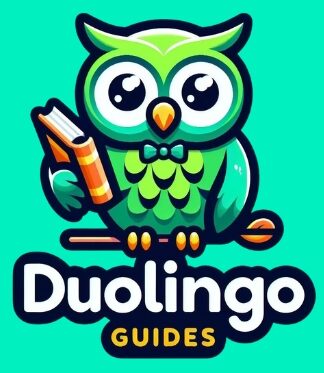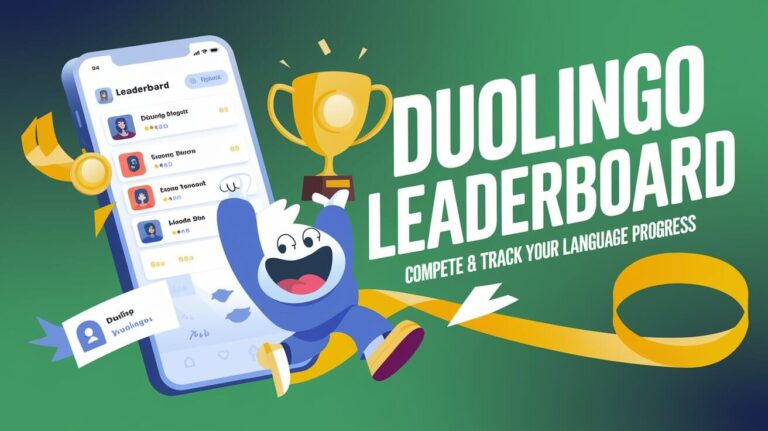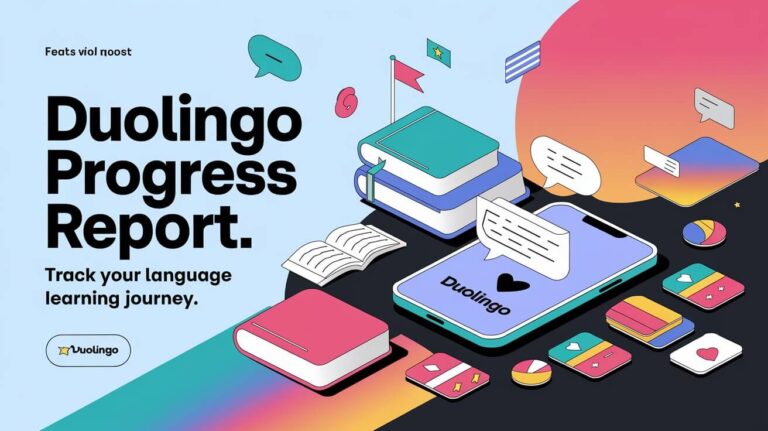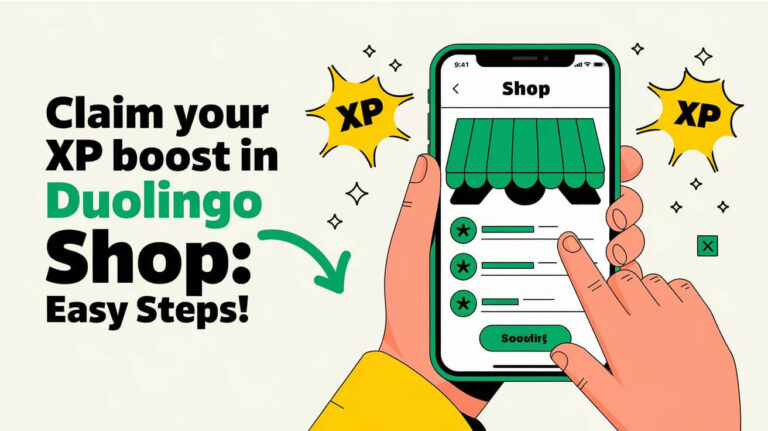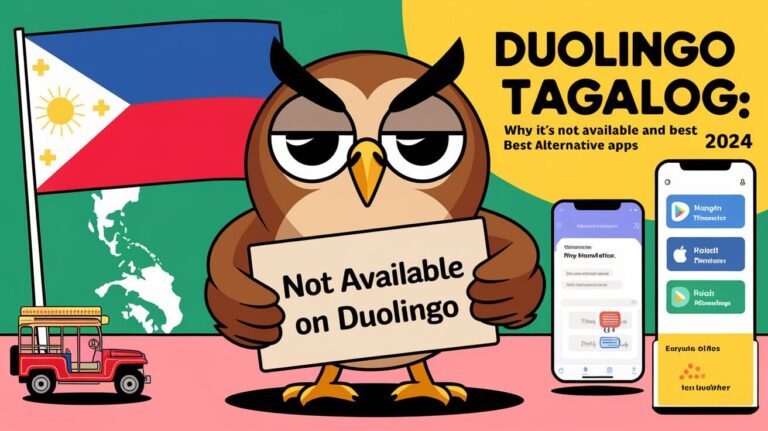Duolingo is the top language learning app worldwide, offering over 40 languages. This includes special or fictional ones. It’s known for making learning fun with its gamification and interactive lessons.
As a leading app, Duolingo offers a new way to learn languages. Users can do daily exercises and see how they’re doing. It’s a great choice for those wanting to learn a new language.
Duolingo is great for learning many languages, from Spanish and French to rarer ones. Apps like Duolingo, Memrise, and Babbel have changed language learning. They make it easy and fun to learn a new language.
Duolingo’s Core Teaching Method
Duolingo makes learning languages fun and engaging. It uses gamification to keep users motivated. The app also uses spaced repetition and a skill tree to help learners remember new words and track their progress.
Gamification Elements
Duolingo includes points, badges, and leaderboards to keep users engaged. These elements help users stay on track and maintain their learning streaks. This method improves learning outcomes by presenting material at the right level of difficulty.
Spaced Repetition System
Duolingo’s spaced repetition system helps users memorize new words and phrases. It prompts users to review previous material at the best times. This method boosts retention and understanding of new material.
Skill Tree Progression
The skill tree in Duolingo lets users see their progress and focus on areas needing improvement. This keeps users motivated and engaged. They can see their achievements and feel a sense of accomplishment.
Research Behind Duolingo’s Success Rate
Duolingo’s success in teaching languages has caught the eye of many researchers. While it’s hard to say exactly how good it is, studies show it can really help. For example, beginners who used Duolingo for about 27 hours to learn Spanish saw big improvements in speaking and understanding.
Some interesting facts from research include:
- Duolingo users who reach the A2 level in English do well on reading and listening tests.
- Users can get up to 90% right in short talks after 4-6 weeks.
- Duolingo’s interactive way can help learners get good fast. Some learners match what they learn in four semesters of college in just a few weeks.
Even though Duolingo isn’t a full replacement for learning languages the old way, it’s still very helpful. Spanish teacher Rebecca Case says real learning happens in real situations, not just through apps. But Duolingo is still a top choice for many, with over 575 million users and classes in more than 45 languages.
| Language | Number of Users | Effectiveness |
|---|---|---|
| Spanish | 49.2 million | Highly effective |
| French | 20 million | Highly effective |
| Japanese | 10 million | Moderately effective |
| Chinese | 5 million | Moderately effective |
Language Options and Course Structure
Duolingo offers over 40 languages, including Spanish, French, and German. The courses are set up to meet different learning needs. You can pick one language or explore several, based on your interests and goals.
The difficulty levels range from beginner to advanced. Each course is divided into sections, with the number of sections depending on the language. For instance, Spanish and French courses have 9 sections each. The main topics include basics, travel, food, family, work, hobbies, culture, grammar, and idioms.
Available Languages
Duolingo’s language options include:
- Spanish
- French
- German
- And many more
Course Difficulty Levels
The difficulty levels are set to match different learning needs, from A1 to B2. The time needed to improve varies by course and goals. But, with regular practice, you can see progress in just three months.
Time Investment Requirements
The time needed for Duolingo courses varies. But, you can expect to spend 10-30 minutes daily practicing. With consistent effort, you can reach high proficiency levels, even up to CEFR level B2.
| Language | Number of Sections | Difficulty Level |
|---|---|---|
| Spanish | 9 | A1-B2 |
| French | 9 | A1-B2 |
| German | 7 | A1-B1 |
Free vs Premium Features
When it comes to learning a new language with Duolingo, you have two choices. The free version lets you practice and track your progress a bit. But, the premium version, called Super Duolingo, offers more. You get offline access, no ads, and more practice.
Some key features of Duolingo premium include:
- Offline access, allowing users to learn anywhere, anytime
- Ad-free learning, providing a more immersive experience
- Unlimited hearts, eliminating the need to wait or complete more exercises when hearts run out
- Advanced progress tracking, enabling users to monitor their progress and stay motivated
Duolingo premium costs $9.99 a month or $119.99 a year. This is pretty good compared to other apps. Babbel costs $6.95 a month, and Memrise is $10.92.
| Feature | Duolingo Free | Duolingo Premium |
|---|---|---|
| Offline Access | No | Yes |
| Ad-Free Learning | No | Yes |
| Unlimited Hearts | No | Yes |
| Advanced Progress Tracking | No | Yes |
Duolingo premium has lots of benefits for learning a new language. It’s priced well and has many features. If you’re serious about learning a new language, Duolingo premium is worth looking into.
Is Duolingo Good for Learning a Language?
Duolingo has over 500 million users worldwide, teaching 39 languages. It’s known for helping people learn vocabulary and grammar. The app makes learning fun by focusing on speaking, grammar, and words.
Using Duolingo has many benefits. For example:
- 34% of users see their speaking skills improve daily.
- Just 30 minutes a day can be as good as a semester of college language class.
- After 200-300 hours, you can reach a B1-B2 level of language skill.
Duolingo is free and easy to use. It uses smart technology and a big community to make learning fun. It’s great for improving speaking, grammar, and vocabulary.
Pronunciation Development
Duolingo’s lessons help you get better at speaking. You listen and repeat words and phrases.
Grammar Acquisition
The app’s grammar lessons are fun and simple. They help you learn new grammar rules easily.
Vocabulary Building
Duolingo helps you learn new words through fun lessons and exercises. This way, you can remember and use new phrases.
Real User Progress Data
Duolingo has shared data on how users progress. It shows learners can make big strides quickly. Many reach levels similar to university students.
A study found Duolingo users match university students after four semesters. They spend about half the time in the app.
Duolingo’s user data offers insights into its success. Over 95% of G2 users give it 5 stars for learning languages. It ranks #2 in language learning software, according to G2’s Fall 2024 grid report.
Some key statistics on Duolingo’s user progress include:
- More than two-thirds of Duolingo learners at the end of beginner-level content demonstrated speaking proficiency at the A2 CEFR level.
- 97% of educators reported that Duolingo was effective in helping students improve their skills.
- 96% of educators stated that Duolingo helps students learn a language faster.
Duolingo’s data shows it’s a top choice for learning languages. Its fun approach, flexible lessons, and mobile access make it popular. The data proves Duolingo helps users make real progress in language skills.
| Statistic | Percentage |
|---|---|
| Users who rate Duolingo 5 stars | 95% |
| Rank in language learning software category | #2 |
| Learners who demonstrate speaking proficiency at A2 CEFR level | More than two-thirds |
Limitations of App-Based Learning
App-based learning platforms like Duolingo have changed how we learn languages. Yet, they have their downsides. One big issue is the lack of conversation practice. This makes it hard to improve speaking skills and understand cultural context.
Another problem is the missing cultural context. Learning a language is more than just memorizing words. It’s also about grasping cultural nuances and context. Without this, learners might struggle to communicate well in real life.
Some key limitations of app-based learning include:
- Gaps in conversation practice, which can hinder the development of speaking skills
- Lack of cultural context, which can lead to misunderstandings and miscommunications
- Insufficient feedback and assessment, which can make it difficult for learners to track their progress
Even with these limitations, app-based learning can still be helpful. By adding other resources, like language exchange programs or cultural immersion, learners can improve. This way, they can reach their language learning goals.
| Limitation | Description |
|---|---|
| Conversation Practice | Gaps in conversation practice can hinder the development of speaking skills |
| Cultural Context | Lack of cultural context can lead to misunderstandings and miscommunications |
| Feedback and Assessment | Insufficient feedback and assessment can make it difficult for learners to track their progress |
Supplementary Learning Tools
Duolingo and other apps are great for learning a new language. But, they might not cover everything you need to become fluent. That’s where extra tools come in. Sites for language exchange and podcasts can really help.
Language exchange sites let you talk with native speakers. Podcasts offer more chances to listen and speak. These tools can make your learning more complete.
Here are some examples of tools you can use:
- Language exchange websites, such as italki or Conversation Exchange
- Language learning podcasts, such as “Coffee Break” or “News in Slow
- Language learning YouTube channels, such as EnglishClass101 or SpanishDict
These resources can give you more practice and support. They’re great for supplementing your learning.
| Tool | Description |
|---|---|
| Language exchange websites | Practice speaking with native speakers |
| Language learning podcasts | Additional listening and speaking practice |
| Language learning YouTube channels | Video lessons and explanations |
Using these tools can help you make a better learning plan. They can help you reach your language goals. Whether you need more practice or resources, there’s something out there for you.
Success Stories and Statistics
Language learning success stories show how well apps like Duolingo work. Many users have made great progress in their target languages. For example, just 5 units on Duolingo can be as good as 4 university semesters.
Lisa, learning Spanish for about 3.5 years with Duolingo, is a great example. Corniesha Johnson and Peter Shields have also made big strides in Spanish and French, respectively. They’ve shown how Duolingo can help with long-term learning.
Some notable examples of language learning success include:
- Jennifer Tsan, who finished the French course in 5 weeks by studying over 5 hours a day.
- Janet Randolph, learning French for 2.5 years, keeps a study streak of nearly 900 days with about 1 hour each morning.
These stories show how language learning apps can be used for professional growth. This is true when you practice regularly and stay committed.
With Duolingo’s daily users growing from 28.4 million in 2021 to 66.8 million in 2023, it’s clear these apps are key. Revenue also jumped from 105.7 million USD to 201.3 million USD. This shows language learning apps are vital for improving skills and achieving goals.
Scientific Studies on App Effectiveness
Research shows that apps like Duolingo can help language learners. Studies have looked into Duolingo’s effectiveness, with good results. For instance, a study found that beginners using Duolingo for 4-6 weeks got 90% right in tests of speaking and writing.
Other studies compared Duolingo to old-school learning methods. They found Duolingo users did better in vocabulary, grammar, and speaking English. Duolingo’s fun features, spaced repetition, and skill tree help make it effective.
University Research Findings
University studies have also looked into language apps. A study in the International Journal on Emerging Technologies showed Duolingo users improved a lot in speaking, writing, reading, and listening. Another study found Duolingo users scored high in reading and listening tests after reaching the A2 CEFR level.
Comparative Analysis
A study compared different language apps. It found Duolingo was better than Babbel for building vocabulary and learning grammar. Duolingo was also more efficient than traditional learning methods. These studies show Duolingo’s effectiveness and its role in language learning research.
| App | Effectiveness | Efficiency |
|---|---|---|
| Duolingo | High | High |
| Babbel | Medium | Medium |
| Traditional Methods | Low | Low |
Final Thoughts
Duolingo has made a big impact in the world of language learning apps. It’s great for people at all levels, helping them start or keep up their language skills. The app makes learning fun with its game-like features, making it better than old-school methods.
Studies show Duolingo works well for beginners and those who want to improve their language skills. But, it’s not perfect. It lacks in teaching grammar and real-life conversations. So, it’s best used with other learning tools like language exchange or tutoring.
Duolingo is still a top choice for those wanting to learn a new language. It’s not the only way to get fluent, but it’s a fun and useful part of learning. Its design and growing user base show it’s a key part of a good language learning plan.
Popular Queries
Is Duolingo an effective language learning tool?
Duolingo is a well-known app for learning languages. It uses games to make learning fun. Some studies show it works well for those who practice regularly.
What is Duolingo’s core teaching method?
Duolingo makes learning fun with games. It uses a system to help remember new words. You can also see how far you’ve come.
What kind of research has been done on Duolingo’s success rate?
Not much research exists on Duolingo’s success. But, some studies say it’s good for learning vocabulary and grammar quickly.
What language options and course structure does Duolingo offer?
Duolingo has over 40 languages to learn. Courses are challenging and take time. You can learn one language or many, depending on your goals.
What are the differences between the free and premium versions of Duolingo?
The free version of Duolingo has many features and languages. The premium version adds offline learning, no ads, and more content. It’s worth it for serious learners.
How effective is Duolingo in teaching different language skills?
Duolingo is good for learning vocabulary, grammar, and pronunciation. But, it might not help as much with conversations and writing.
What kind of user progress data has Duolingo published?
Duolingo has shared data on user progress. It shows learners can make a lot of progress quickly. This is great for motivated learners.
What are the limitations of app-based language learning?
Duolingo and similar apps are useful but have limits. They don’t offer enough conversation practice or cultural context. This can make learning feel incomplete.
What supplementary learning tools can support language learners?
While apps like Duolingo are helpful, they’re not enough for true proficiency. Tools like language exchange sites and podcasts can provide extra support.
What success stories and statistics demonstrate the effectiveness of Duolingo and other language learning apps?
Many success stories and statistics show Duolingo and similar apps work well. They help learners make progress and become proficient, as long as they stay motivated.
What scientific studies have investigated the effectiveness of language learning apps, including Duolingo?
Studies show apps like Duolingo are good for learning vocabulary and grammar. But, they also point out the need for more conversation practice and cultural understanding.
